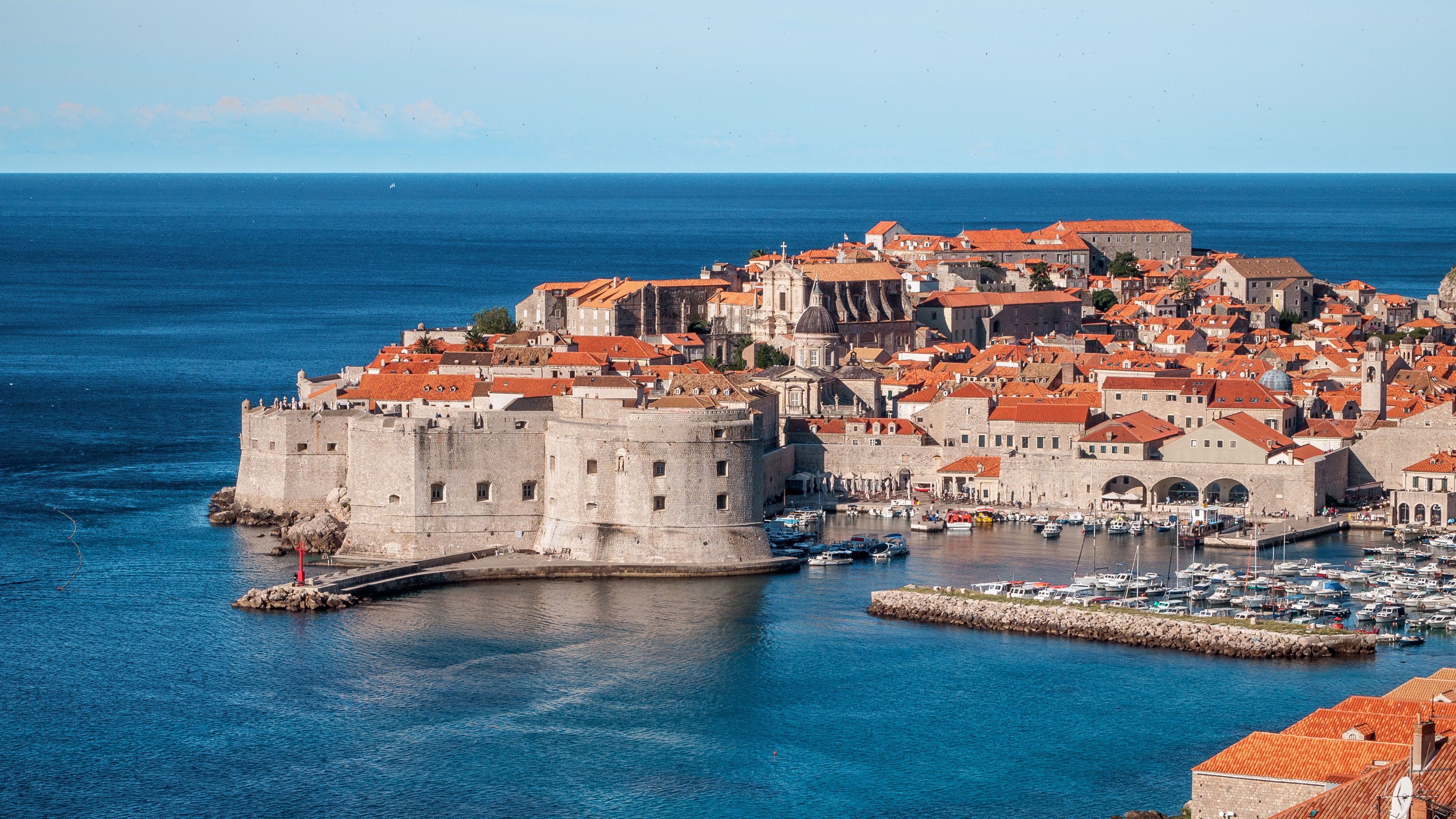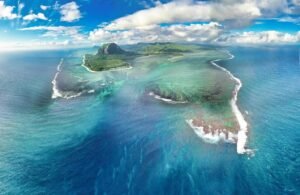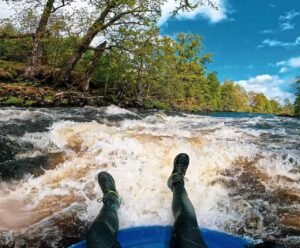
Some people didn’t follow any rules of the government because of that some major problems arises. Likewise, due to some careless people many tourist places were destroyed. This is the list of those places which is destroyed by the human beings.
The Chacaltaya Glacier – Bolivia

This was once home to the world’s highest ski resort where you could ski above the clouds at 17,388 feet while admiring the overwhelmingly beautiful views of Lake Titicaca. Not anymore, the devastating effects of climate change have had their merry way and almost 80% of the glacier has significantly eroded over the course of 20 years. The ski area where tourists once visited all year round in abundance is now nothing but a ghost town.
Fairy Shrimp – Uluru – Australia

Not all tourist attractions are funny shaped rocks, beautiful buildings or abandoned structures, some tourist attractions are living breathing things. Once upon a time the creature known as the fairy shrimp was a tourist attraction in and of itself, not anymore humankind managed to wipe it out.
Uluru is one of Australia’s best-known landmarks, a rock created over 600 million years ago. Once upon a time it sat at the bottom of the sea but it’s now 338 meters above ground but you don’t have to be Hank Schrader to appreciate this rock. This rock was home to an entire species, the only place in the entire world where you could find the branchinella latzi also known as the fairy shrimp was in pools of water on uluru.
People came from the world over to look at this strange and rare shrimp in the only place in the world where you could find them but then in the 1970’s they mysteriously vanished. It wasn’t until 2009, Wildlife Science Professor Brian Timms came to the conclusion that human waste from tourists was the culprit. As it turns out visitors began defecating on top of Uluru because there were no toilets available.
Nazca Lines, Peru

It is often called the greatest enigma of the archaeological world. The Nazca lines in Peru were a series of strange images of unknown origin scratched into the surface of a coastal plain about 225 miles south of Lima and the world’s best-known collection of geoglyphs, best appreciated when you look at them from high up in the sky. Not anymore, in a blistering example of relentless irony, a publicity stunt by Greenpeace screwed this one up.
In 2014, the Peruvian government was angered by the activists when they conducted a publicity stunt during UN climate change talks being held in Lima. They laid a sign saying time for change, the future is renewable, Greenpeace, next to the etching of a hummingbird. Their footprints and the sign, however, caused damage to the site and they’re not even the only ones to cause damage to the geoglyphs. Drivers regularly cut through the plain seemingly unaware that they’re mowing their way through the greatest enigma of the archaeological world.
One driver in February 2018 knew exactly what he was doing. This truck driver intentionally drove his tractor trailer off a roadway that runs through the historic site damaging three geoglyphs. Authorities arrested the truck driver and charged him with an attack against cultural heritage.
The Duckbill Rock Formation

This duck bill shaped rock was a very popular tourist attraction in the Pacific Northwest. Not anymore, it makes sense that people loved it, a sandstone rock shaped like a duck’s bill. Visitors loved the duck bill rock formation so much that Oregon State Parks had no choice but to put barriers up to protect it from damage. There are some dangers in the world that not even a barrier can protect you from. One morning in 2016, they found the duckbill rock formation crumbled. A video soon surfaced exposing the truth, a group of teenagers with no appreciation for rocks in the shape of duck bills had destroyed it for fun.
The Tree of Tenere

The Sahara Desert is vast and empty, nothing to see for 250 miles but there in the heart stood one lone tree. The sole reminder of the once greener Sahara and a landmark for nomads for centuries and centuries. Not anymore, the fact that this one lone tree survived as the green Sahara turned to sand was nothing short of a miracle of nature but then in 1973, a drunk Libyan driver plowed into it without a care in the world snapping the tree in the process. For centuries, this one tree survived everything nature could throw at it but the one thing he couldn’t survive was a drunk human. The remains of the tree now sit in the Niger National Museum and a metal sculpture has since been erected where the tree once stood.
The Aral Sea

The Aral Sea was once the fourth largest lake in the world. Not anymore, in the 1960’s, the Soviet Union began an irrigation project that diverted the rivers that once fed the Aral Sea. Immediately, the sea began to diminish in size whilst this meant a gorgeous sightseeing tourist spot had been lost, the wider ramifications were even worse. The local fisheries and communities that depended on that now gone Aral Sea have been devastatingly affected and what little water was left has been seriously polluted by fertilizer and pesticides. This once gorgeous Lake has been replaced by nothing but degraded soil and a few rusting old ships.
Boeung Kak Lake – Combodia

Boeung Kak lake in cambodia was once a beautiful lake in lakeside area in the northern part of Phnom Penh. Not anymore, international visitors frequented the scenic area instead and guest houses. There, they engaged in all manner of activities enjoying the lake for all its beauty but these days not so much.
In 2007, the Cambodian government granted development rights to Shukaku incorporate, by 2010 they felled over 90% of the lake with sand to make way for buildings and various developments. That company is owned by the wife of a senator of the ruling party and the deal eliminated tourism in the area. It also had disastrous effects on the 4,000+ families that depended on the lake for survival. Many either had to relocate, deal with frequent flooding or receive some small amount of compensation.
Torres Del Paine National Park, Chile

Torres Del Paine National Park was once beautiful and not on fire. Not anymore, despite being a beautiful place, this park gets destroyed by so many fires caused by humans it’s basically a tradition at this point. The first was way back in February of 2005, caused by a tourist in the grassland area where camping was prohibited. The fire lasted for ten days and destroyed 7% of the park.
There was another in February 2011 when a tourist lit a bonfire in an unauthorized area and yet another in December of 2011 when a tourist set fire to some toilet paper. The toilet paper fire was so bad that the park had no choice but to temporarily closed down between December 29th 2011 and January 4th 2012. The most recent huge fire was back in 2015 and led to the two tourists responsible being banned for two years.
Paleolithic Cave Paintings – Grotte De Lascaux

In 1940, Jacques Marsal and his three fellow French teenagers stumbled across a cave. They were searching for their missing dog, their find was a gallery of over 600 paintings and 500 engravings on limestone. The images consisted of animals, humans, hunting, and abstract signs. Overall, people considered the art to be the work of more than 1000 generations, it became a hot spot for art fanatics the world over.
Not anymore, it would seem that the generation that followed the discovery were not as keen on art preservation. The unique character and physical realism made the site the pride and joy for Montaigne. It attracted a vast majority of visitors, these visitors carry heat humidity and other contaminants that altered the caves climate. After several unsuccessful attempts at air-conditioning, the growth of a pervasive fungus threatened the images. Authorities closed the site 23 years after its discovery. They opened less co2 in 1983 in order to make the public happy. Less co2 is in elaborate replicas of key parts of the cave. The purpose is to present an impression of the paintings scale and composition for the public without harming the originals.
The Seattle Gum Wall

The Market Theatre gum wall affectionately known as the Seattle gum wall was a brick wall covered in used chewing gum, located in an alleyway in post alley under Pike Place Market in downtown Seattle. Not anymore, the interesting thing about this tourist attraction is that it’s both man-made and man destroyed.
One day some legend decided to stick a piece of gum on the wall and from there things got out of hand, piece after piece was added to the wall until pretty soon the wall was more gum than wall. The rather disgusting tradition began in 1993 when patrons of unexpected production Seattle theater sports stuck gum to the wall. Theater workers scraped the gum away twice but gave up after market officials deemed the wall a tourist attraction around 1999 but despite being popular, the Seattle gum walls unique properties soon came to be its undoing.
The sheer amount of gum was becoming destructive to the structure of the brick. In 2015, the Pike Place Market preservation and Development Authority decided enough was enough and for the first time in 20 years the wall would be thoroughly scrubbed clean.




